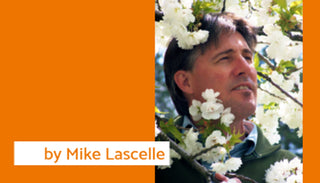Let's start with a riddle…
Q: When is a cherry not a cherry?
A: When it’s an imposter from the dogwood family.
True Cherries vs Dogwood Cherries

True cherries are members of the Prunus genus and there are quite a few to choose from, including sweet cherry (P. avium), sour cherry (P. cerasus), Nanking cherry (P. tomentosa), black cherry (P. serotina), Mongolian cherry (P. fruticosa), sand cherry (P. pumila), chokecherry (P. virginiana) and bird cherry (P. padus), among others. All of these are edible straight off the bush or tree except the last two species, which contain high amounts of natural cyanide and are best used to make jellies and jams.
Dogwoods, on the other hand, are considered by most gardeners to be flowering ornamental trees, but some also have edible fruits. The most common of these fits both categories as Korean Dogwood (Cornus kousa) has beautiful white or pink bracts, followed by warty rounded red fruits that have a mango flavour in their prime. Our second example is a bit of a rarity, as Cornus officinalis is a native of Asia, and its astringent red fruits are used in traditional Chinese medicines.

Cornelian Cherry Dogwood Tree

Our real focus here is Cornus mas or Cornelian Cherry. Its Latin name makes reference to its hard wood (Cornus = horn) and mas or male, which speaks to its adaptability as a plant species. The common name Cornelian Cherry is a comparison of the bright red fruits to the semi-precious gemstone Carnelian. This species is native to southern Europe, Turkey, and southwestern Asia where it has long been used as a food staple, but here in North America, we have been utilizing it as an ornamental. Perhaps the most common of these is ‘Golden Glory’, a compact shade tree with a heavy blooming habit. The only other cultivars that I’ve come across over the years are variegated forms such as ‘Tricolor’ (pink highlights), ‘Aureo-Elegantissima’ (gold variegation), ‘Variegata’ (white marginal edging), and ‘Aurea’ (golden foliage) but all of these are somewhat prone to scorch in full sun exposures.
Cornelian Cherry Tree for All-Season Interest

Even the green-leaved forms of this species have much to offer our gardens, including a dazzling display of umbels composed of bright yellow bracts before the leaves emerge, usually in late winter about a week before the forsythia blooms. With a long summer, there is often nice reddish-purple autumn foliage and the species is quite disease resistant, with a little leaf spotting from anthracnose sometimes occurring after a prolonged wet spring. The burgundy-red fruits are somewhat rod-shaped or ellipsoid in form and ripen in late summer, but be warned that they are a bit astringent if picked too early. Fully ripened fruits have a pleasant flavor of sour cherry with cranberry when eaten fresh. They can be used to make jams (be warned they are low in natural pectin), wine, liqueurs, pickles, and juices, and are even utilized as a soft drink flavouring.
Cornelian Cherry Varieties
Most of the newer fruiting introductions come to us from Europe (particularly Ukraine) including the pear-shaped ‘Elegant’ and ‘Pioneer’, both of which produce 1.5”-long fruits, with ‘Pioneer’ being slightly sweeter. There are even yellow-fruited cultivars such as ‘Flava’ (also known as ‘Yellow’) which have a much more subtle flavour with hints of pineapple. All are considered partially self-fertile but produce larger crops and individual berries when cross-pollinated by a different cultivar.
Why You Want a Cornelian Cherry Dogwood Tree
Cornelian Cherry Dogwood trees are very cold hardy (USDA Zone 4), long-lived (up to 50 years), and reasonably compact at 12-15’ tall. They can be grown in both full sun and partial shade, and are easily trained as either shrub or tree form. So, maybe it’s time for you to look into the fruit tree that doubles as an ornamental and is incredibly easy to grow.


